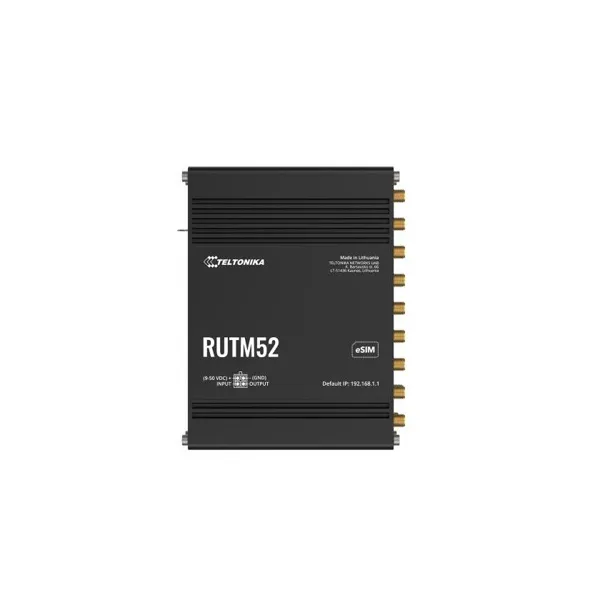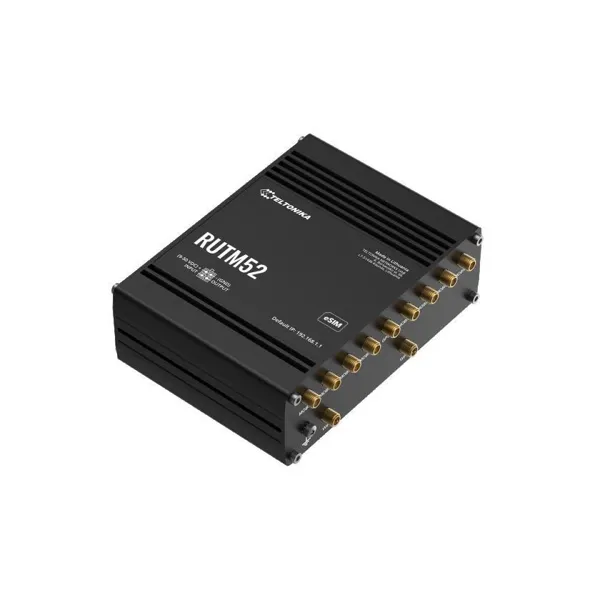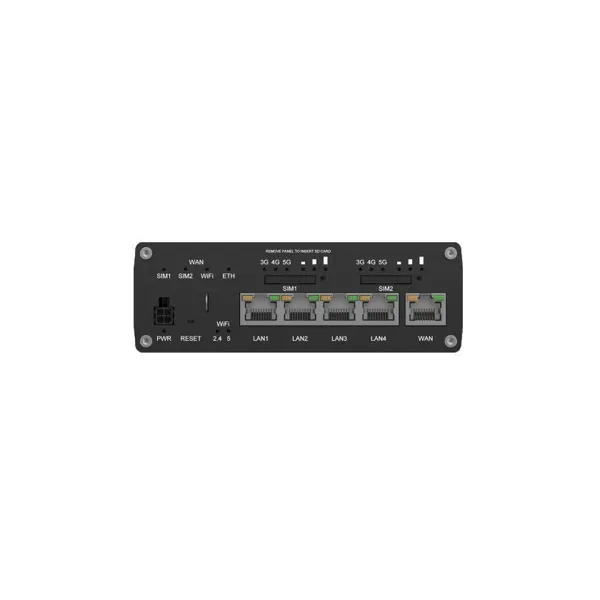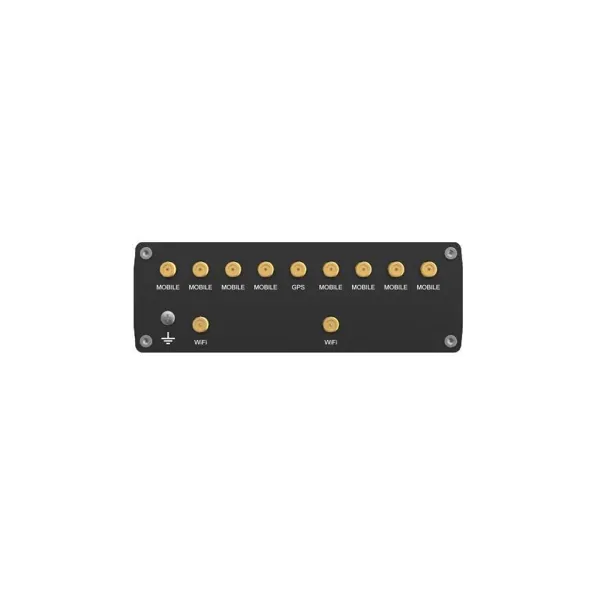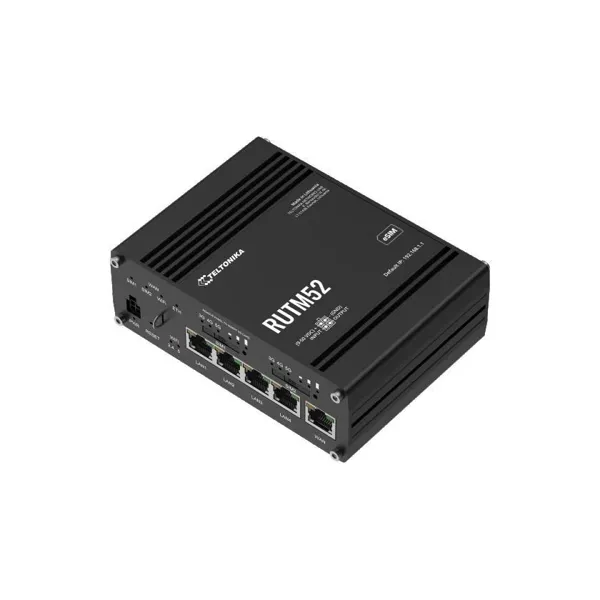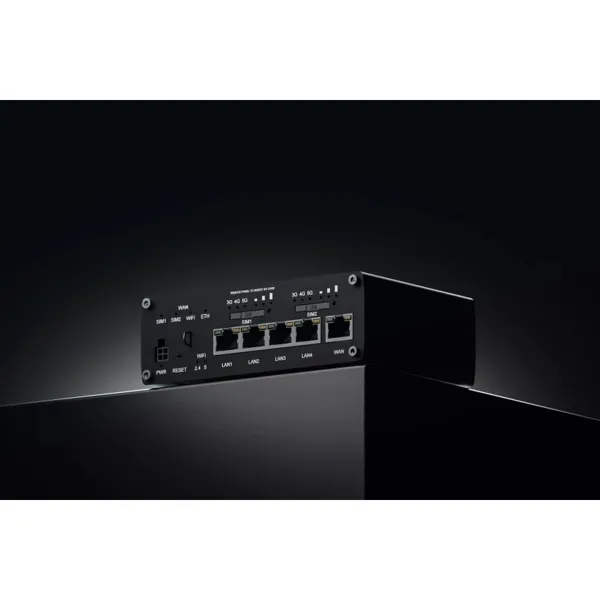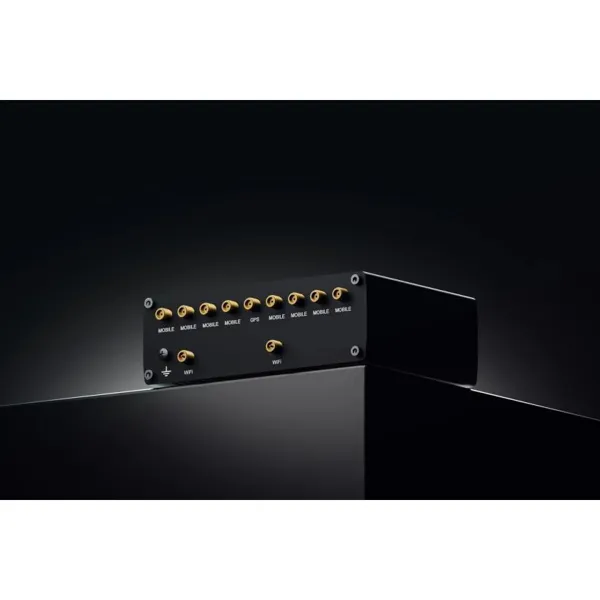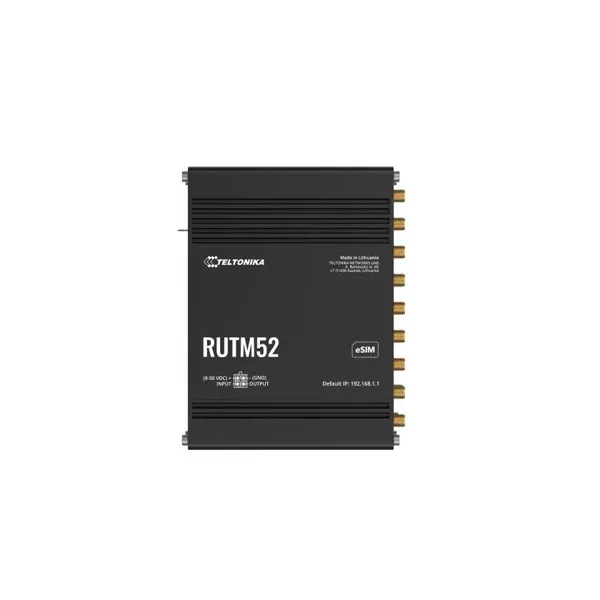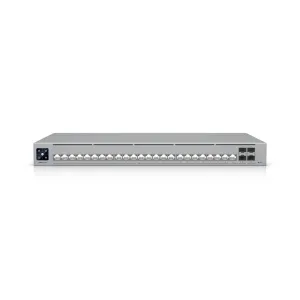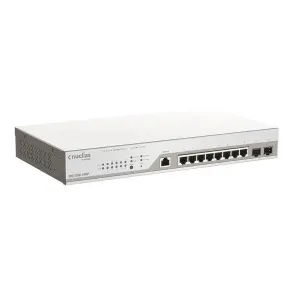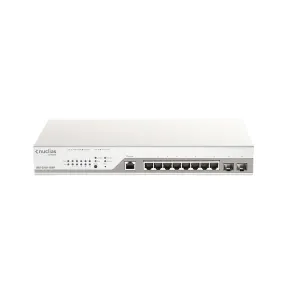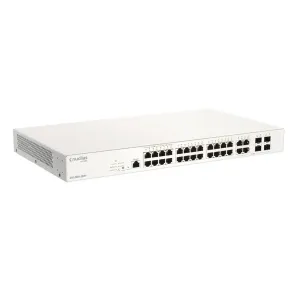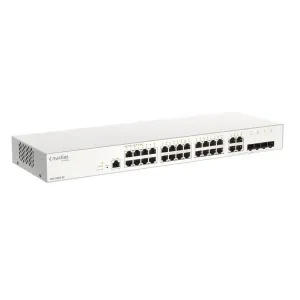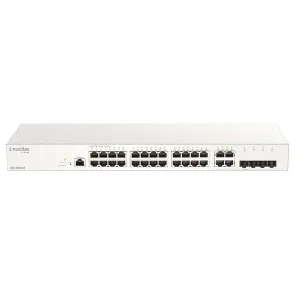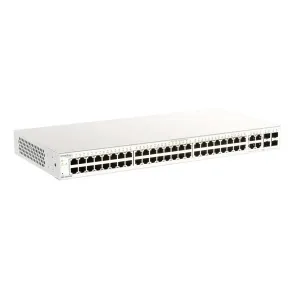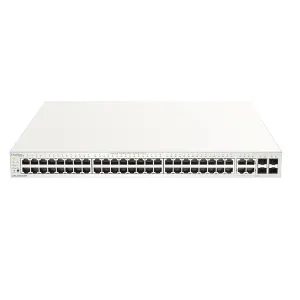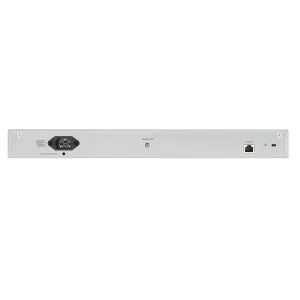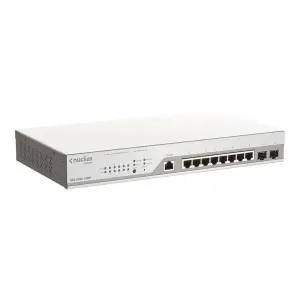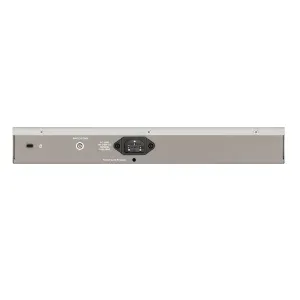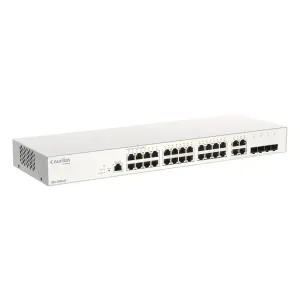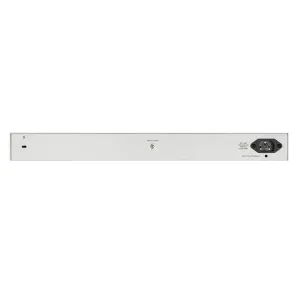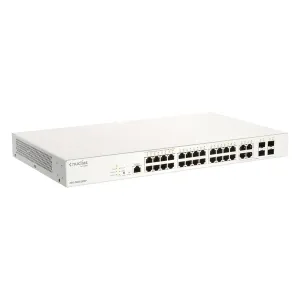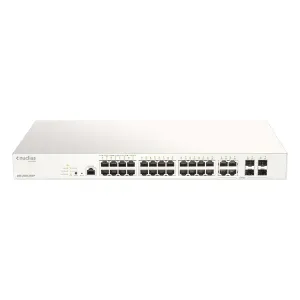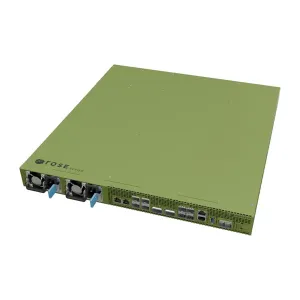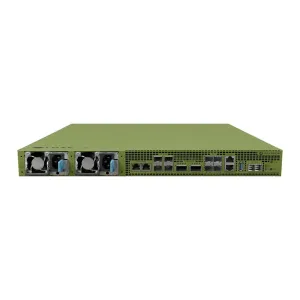Teltonika – RUTM52 – DUAL 5G ROUTER
incl. 19% VAT plus shipping costs
The RUTM52 is a future-proof 5G router designed for business-critical applications. It is equipped with dual 5G modems, multi-WAN functions and a 4G LTE Cat 20 fallback. With two SIM slots, eSIM support and compatibility with SA and NSA 5G…
| SKU | 401694 |
|---|---|
| EAN | 4251876966044 |
| MPN | RUTM52 |
| Categories | Networking, Routers & Switch |
| Tags | 2G/3G/4G/5G Router/Gateway, Networking, Router, Teltonika, VPN-Router, wireless router |
The RUTM52 is a future-proof 5G router designed for business-critical applications. It is equipped with dual 5G modems, multi-WAN functions and a 4G LTE Cat 20 fallback. With two SIM slots, eSIM support and compatibility with SA and NSA 5G architectures, it offers uninterrupted high-speed connectivity today and in the future. Load balancing, Wi-Fi 5 and five Gigabit Ethernet ports improve performance, while RutOS with industrial protocols and various VPNs make the RUTM52 a versatile solution for complex setups. Compatibility with RMS makes it ideal for secure and efficient remote management.
– DUAL 5G MODEM: Up to twice the mobile speed and uninterrupted connection
– DUAL SIM & eSIM™: With automatic failover, backup WAN and other switching scenarios
– SA & NSA: Supports both architectures to utilise the 5G infrastructure
– FUTURE-COMPATIBLE: Backwards compatible with 4G (LTE Cat 20)
Mobile
– Mobile module: 2 x 5G Sub-6 GHz SA/NSA 2.1/3.3Gbps DL (4×4 MIMO) 900/600Mbps UL (2×2 MIMO); 4G (LTE): DL Cat 20 2.0Gbps (4×4 MIMO)/UL Cat 20 200Mbps; 3G: 42 Mbps DL, 5.76Mbps UL
– 3GPP Release: Release 16:
– eSIM: eSIM for end users, download and removal of profiles, up to 7 eSIM profiles; does not include data plans
– SIM change: 2 SIM cards, automatic change in case of weak signal, data limit, SMS limit, roaming, no network, network denied, data connection error, SIM idle protection
– Status: IMSI, ICCID, operator, operator status, data connection status, network type, CA indicator, bandwidth, connected band, signal strength (RSSI), SINR, RSRP, RSRQ, EC/IO, RSCP, data sent/received, LAC, TAC, cell ID, ARFCN, UARFCN, EARFCN, MCC and MNC
– SMS: SMS status, SMS configuration, send/read SMS via HTTP POST/GET, EMAIL to SMS, SMS to EMAIL, SMS to HTTP, SMS to SMS, scheduled SMS, SMS autoreply, SMPP
– USSD: Supports sending and reading of Unstructured Supplementary Service Data messages
– Black/white list: Black/white list of operators (by country or individual operators)
– Multiple PDN: Ability to use different PDNs for multiple network accesses and services
– Band management: Band lock, display the status of the band in use
– SIM PIN code management: SIM PIN code management allows setting, changing or deactivating the PIN of the SIM card
– APN: Auto APN
– Bridge: Direct connection (bridge) between mobile ISP and device in the LAN
– Pass-through: Router assigns its mobile WAN IP address to another device
– Framed Routing: Framed Routing: Support of an IP network behind 5G UE
Wireless
– Wireless mode: 802.11b/g/n/ac Wave 2 (Wi-Fi 5) with data transfer rates of up to 867 Mbps (dual band, MU-MIMO)
– WiFi security: WPA2-Enterprise – PEAP, WPA2-PSK, WPA-EAP, WPA-PSK, WPA3-SAE, WPA3-EAP, OWE; AES-CCMP, TKIP, auto-cipher modes, client separation, EAP-TLS with PKCS#12 certificates, deactivation of auto-reconnect, 802.11w Protected Management Frames (PMF)
– SSID/ESSID: ESSID stealth mode
– Wi-Fi users: Up to 150 simultaneous connections
– Wireless connectivity features: Wireless Mesh (802.11s), Fast Roaming (802.11r), Relayd, BSS Transition Management (802.11v), Radio Resource Metering (802.11k)
– Wireless MAC filter: Permission list, block list
– Wireless QR code generator: Once scanned, a user is automatically admitted to your network without having to enter login information
– TravelMate: Forwarding of the Wi-Fi hotspot landing page to a subsequently connected device
Ethernet
– WAN: 1 x WAN connection 10/100/1000 Mbit/s, complies with the standards IEEE 802.3, IEEE 802.3u, 802.3az, supports Auto-MDI/MDIX-Crossover
– LAN: 4 x LAN ports, 10/100/1000 Mbit/s, complies with standards IEEE 802.3, IEEE 802.3u, 802.3az, supports Auto-MDI/MDIX-Crossover
Network
– Routing: Static routing, dynamic routing (BGP, OSPF v2, RIP v1/v2, EIGRP, NHRP), policy-based routing
– Network protocols: TCP, UDP, IPv4, IPv6, ICMP, NTP, DNS, HTTP, HTTPS, FTP, SMTP, SSL v3, TLS, ARP, VRRP, PPP, PPPoE, UPNP, SSH, DHCP, Telnet, SMPP, SNMP, MQTT, Wake On Lan (WOL), VXLAN
– VoIP passthrough support: H.323- and SIP alg protocol NAT helpers that enable correct forwarding of VoIP packets
– Connection monitoring: Ping Reboot, Wget Reboot, Periodic Reboot, LCP and ICMP for connection monitoring
– Firewall: Port forwarding, traffic rules, user-defined rules, TTL destination customisation
– Firewall status page: Display all firewall statistics, rules and rule counters
– Ports management: display device ports, enable and disable individual ports, enable or disable automatic configuration, change transmission speed, etc.
– Network topology: Visual representation of your network, showing which devices are connected to which other devices
– Hotspot: Captive portal (hotspot), internal/external Radius server, Radius MAC authentication, SMS authorisation, SSO authentication, internal/external landing page, walled garden, user scripts, URL parameters, user groups, individual user or group restrictions, user management, 9 default customisable themes and the ability to upload and download customised hotspot themes
– DHCP: Static and dynamic IP assignment, DHCP relay, DHCP server configuration, status, static leases: MAC with wildcards
– QoS / Smart Queue Management (SQM): traffic priority queue
– Load balancing: balancing Internet traffic across multiple WAN links
– SSHFS: ability to mount remote file systems via SSH protocol
– VRF support: Initial support for virtual routing and forwarding (VRF)
– Traffic management: real-time monitoring, wireless signal graphs, traffic usage history
– DDNS: Supports >25 service providers, more can be configured manually
– DNS over HTTPS: DNS over HTTPS proxy enables secure DNS resolution by forwarding DNS requests over HTTPS
– Network security: Wi-Fi WAN, Mobile, VRRP, wired options, any of which can be used as automatic failover
– Load balancing: balancing Internet traffic across multiple WAN connections
– SSHFS: ability to mount remote file systems via SSH protocol
– VRF support: initial support for virtual routing and forwarding (VRF)
– Traffic management: real-time monitoring, wireless signal graphs, traffic usage history
Security
– 802.1x: Port-based client for network access control
– Authentication: Pre-shared key, digital certificates, X.509-certificates, TACACS+, internal and external RADIUS user authentication, blocking of IP and login attempts, time-based login blocking, integrated random generator for passwords
– Firewall: Preconfigured firewall rules can be activated via WebUI, unlimited firewall configuration via CLI, DMZ, NAT, NAT-T, NAT64
– Protection against attacks: DDOS protection (SYN flood protection, SSH attack protection, HTTP/HTTPS attack protection), port scan protection (SYN-FIN, SYN-RST, X-mas, NULL flags, FIN scan attacks)
– VLAN: Port and tag-based VLAN separation
– Mobile quota control: Mobile data limit, customisable time period, start time, warning limit, phone number
– WEB filter: Blacklist to block unwanted websites, whitelist to specify only allowed websites
– Access control: Flexible access control of SSH, web interface, CLI and Telnet
– TPM: Identification and authentication module, TPM 2.0 standard
– Creation of SSL certificates: Let’s Encrypt and SCEP certificate creation methods
VPN
– OpenVPN: Multiple clients and a server can run simultaneously, 27 encryption methods
– OpenVPN Encryption: DES-CBC 64, RC2-CBC 128, DES-EDE-CBC 128, DES-EDE3-CBC 192, DESX-CBC 192, BF-CBC 128, RC2-40-CBC 40, CAST5-CBC 128, RC2-64-CBC 64, AES-128-CBC 128, AES-128-CFB 128, AES-128-CFB1 128, AES-128-CFB8 128, AES-128-OFB 128, AES-128-GCM 128, AES-192-CFB 192, AES-192-CFB1 192, AES-192-CFB8 192, AES-192-OFB 192, AES-192-CBC 192, AES-192-GCM 192, AES-256-GCM 256, AES-256-CFB 256, AES-256-CFB1 256, AES-256-CFB8 256, AES-256-OFB 256, AES-256-CBC 256
– IPsec: XFRM, IKEv1, IKEv2, with 14 encryption methods for IPsec (3DES, DES, AES128, AES192, AES256, AES128GCM8, AES192GCM8, AES256GCM8, AES128GCM12, AES192GCM12, AES256GCM12, AES128GCM16, AES192GCM16, AES256GCM16)
– GRE: GRE tunnel, GRE tunnel over IPsec support
– PPTP, L2TP: Client/Server instances can run simultaneously, L2TPv3, L2TP over IPsec support
– Stunnel: Proxy designed to add TLS encryption functionality to existing clients and servers without any changes in the program’s code
– DMVPN: Method of building scalable IPsec VPNs, Phase 2 and Phase 3 and Dual Hub support
– SSTP: SSTP client instance support
– ZeroTier: ZeroTier VPN client support
– WireGuard: WireGuard VPN client and server support
– Tinc: Tinc offers encryption, authentication and compression in it’s tunnels. Client and server support.
– Tailscale: Tailscale offers speed, stability, and simplicity over traditional VPNs. Encrypted point-to-point connections using the open source WireGuard protocol
OPC UA
– Supported modes: Client, Server
– Supported connection types: TCP
MODBUS
– Supported modes: Server, Client
– Supported connection types: TCP
– User-defined registers: MODBUS TCP requirements for user-defined register blocks that can read/write a file within the router and be used to extend MODBUS TCP client functionality
– Supported data formats: 8-bit: INT, UINT; 16-bit: INT, UINT (MSB or LSB first); 32-bit: float, INT, UINT (ABCD (big-endian), DCBA (little-endian), CDAB, BADC), HEX, ASCII
DATA TO SERVER
– Protocol: HTTP(S), MQTT, Azure MQTT
– Data to server: Extract parameters from multiple sources and different protocols and send all parameters to a single server; custom LUA scripting to allow scripts to use the router’s “data to server” function
MQTT gateway
– Modbus MQTT gateway: Enables sending commands and receiving data from MODBUS server via MQTT broker
DNP3
– Supported modes: DNP3 Station, DNP3 Outstation
– Supported connection: TCP
DLMS
– DLMS support: DLMS – Standard protocol for exchanging meter data
– Supported modes: Client
– Supported connection types: TCP
– COSEM: Enables scanning of meter COSEM objects for automatic detection and configuration
API
– Teltonika Networks Web API (Beta) Support: Extend the capabilities of your device by using a set of configurable API endpoints to retrieve or modify data. For more information, please read this documentation: https://developers.teltonika-networks.com
Monitoring and management
– WEB UI: HTTP/HTTPS, status, configuration, FW update, CLI, troubleshooting, multiple event log servers, firmware update availability notifications, event log, system log, kernel log, internet status
– FOTA: Firmware update from server, automatic notification
– SSH: SSH (v1, v2)
– SMS: SMS status, SMS configuration, send/read SMS via HTTP POST/GET
– Call: Restart, status, mobile data on/off, outgoing on/off, answer/hang up with timer, Wi-Fi on/off
– Email: Receive status messages via email for various services
– TR-069: OpenACS, EasyCwmp, ACSLite, tGem, LibreACS, GenieACS, FreeACS, LibCWMP, Friendly tech, AVSystem
– MQTT: MQTT broker, MQTT publisher
– SNMP: SNMP (v1, v2, v3), SNMP trap, brute force protection
– JSON-RPC: Management API via HTTP/HTTPS
– RMS: Teltonika Remote Management System (RMS)
IoT platforms
– ThingWorx: Enables monitoring of: WAN type, WAN IP, mobile provider name, mobile network signal strength, mobile network type
– Cumulocity – Cloud of Things: Enables monitoring of: Device model, revision and serial number, WAN type and IP, mobile cell ID, ICCID, IMEI, connection type, network provider, signal strength. Features reboot and firmware upgrade actions
– Azure IoT Hub: Can be configured with Data to Server to send all available parameters to the cloud. Direct method support that enables the execution of RutOS API calls on the IoT Hub. Also features plug-and-play integration with the Device Provisioning Service, which enables zero-touch device provisioning for IoT Hubs.
– AWS IoT Core: Utility to interact with the AWS cloud platform. Jobs support: Call the device API via the AWS Jobs functionality
System features
– CPU: MediaTek, dual-core, 880 MHz, MIPS1004Kc
– RAM: 256 MB, DDR3
– FLASH storage: 16 MB serial NOR flash, 256 MB serial NAND flash
Firmware / configuration
– WEB UI: Update FW from file, check FW on server, configuration profiles, configuration backup
– FOTA: Update FW
– RMS: Update FW/configuration for multiple devices at once
– Maintain settings: Update FW without losing the current configuration
– Reset to factory settings: A full factory reset restores all system settings, including IP address, PIN and user data, to the manufacturer’s default configuration
FIRMWARE CUSTOMISATION
– Operating system: RutOS (OpenWrt-based Linux operating system)
– Supported languages: Busybox shell, Lua, C, C++
– Development tools: SDK package with build environment provided
– GPL customisation: you can create your own custom firmware and website application by changing colours, logos and other elements in our firmware to suit your needs or those of your customers
– Package Manager: the Package Manager is a service that allows you to install additional software on the device.
Location tracking
– GNSS: GPS, GLONASS, BeiDou, Galileo and QZSS
– Coordinates: GNSS coordinates via WebUI, SMS, TAVL, RMS
– NMEA: NMEA 0183
– NTRIP: NTRIP protocol (Networked Transport of RTCM via Internet Protocol)
– Server software: Supported server software TAVL, RMS
– Geofencing: Multiple geofence zones configurable
Input/output
– Input: 1 x configurable digital input, 0 – 6 V are recognised as logic low, 8 – 50 V are recognised as logic high
– Output: 1 x configurable digital output, open collector output, maximum output 50 V, 300 mA
– Events: Email, RMS, SMS
– I/O juggler: allows specific I/O conditions to be set to trigger events
Power supply
– Connection: 4-pin industrial DC mains socket
– Input voltage range: 9 – 50 VDC, reverse polarity protection, overvoltage protection >51 VDC 10us max
– PoE (passive): Power supply option via the LAN1 connection, not compatible with the IEEE802.3af, 802.3at and 802.3bt, mode B, 9 – 50 VDC
– Power consumption: Idle: < 5 W, Max: < 13 W
Physical interfaces
– Ethernet: 5 x RJ45 ports, 10/100/1000 Mbps
– I/Os: 1 x digital input, 1 x digital output on 4-pin power connector
– Status LEDs: 6 x connection status LEDs, 6 x connection strength LEDs, 10 x Ethernet port status LEDs, 4 x WAN status LEDs, 1 x power LED, 2 x 2.4G and 5G Wi-Fi LEDs
– SIM: 2 x SIM slots (Mini SIM – 2FF), 1.8 V/3 V
– Power supply: 1 x 4-pin power connector
– Antennas: 8 x SMA for cellular, 2 x RP-SMA for Wi-Fi, 1 x SMA for GNNS
– Reset: Restart/user default reset/factory reset button
– Other: 1 x earthing screw
Physical specification
– Housing material: Anodised aluminium housing and panels
– Dimensions (W x H x D): 132 x 44.2 x 95.1 mm
– Weight: 560 g
– Mounting options: DIN rail, wall mounting, flat surface (all require additional kit)
Operating environment
– Operating temperature: -40 °C to 60 °C
– Operating humidity: 10% to 90% non-condensing
– Degree of protection: IP30
Regulatory & type approvals
– Regulatory: CE, UKCA, RCM, FCC, IC, EAC, UCRF, WEE
| Weight | 0,6 kg |
|---|---|
| Dimensions | 14 × 10 × 4 cm |
| switch control | webmanaged |
| Power over Ethernet | yes |
| Environment | indoor |
| Connections | 4-pin, RJ45, RP-SMA, SIM, SMA |
| Produkttyp | Router |
| Color | black |
| operating tempertur | -40°C - +60°C |
| Function | Router |
| SFP Ports | 0 |
| special features | IP30 |
| max. network transfer rate | 1 Gigabit |
| Number of Gigabit ports | 0 |
| Ethernet-Ports | 5 |
| type | 2G/3G/4G/5G Router/Gateway, Router, VPN-Router, wireless router |
Product safety
Manufacturer information
UAB “TELTONIKA IoT GROUP”
Ditvos g. 6
02121 Vilnius
LT - Lithuania
E-Mail: info@teltonika-networks.com
Person responsible for the EU
UAB “TELTONIKA IoT GROUP”
Ditvos g. 6
02121 Vilnius
LT - Lithuania
E-Mail: info@teltonika-networks.com
The name Teltonika for a reliable brand in the development and manufacture of mobile and wireless telecommunication devices. The company specializes primarily in the development of 3G and 4G routers for industrial use as well as hardware for fleet management and vehicle tracking.

